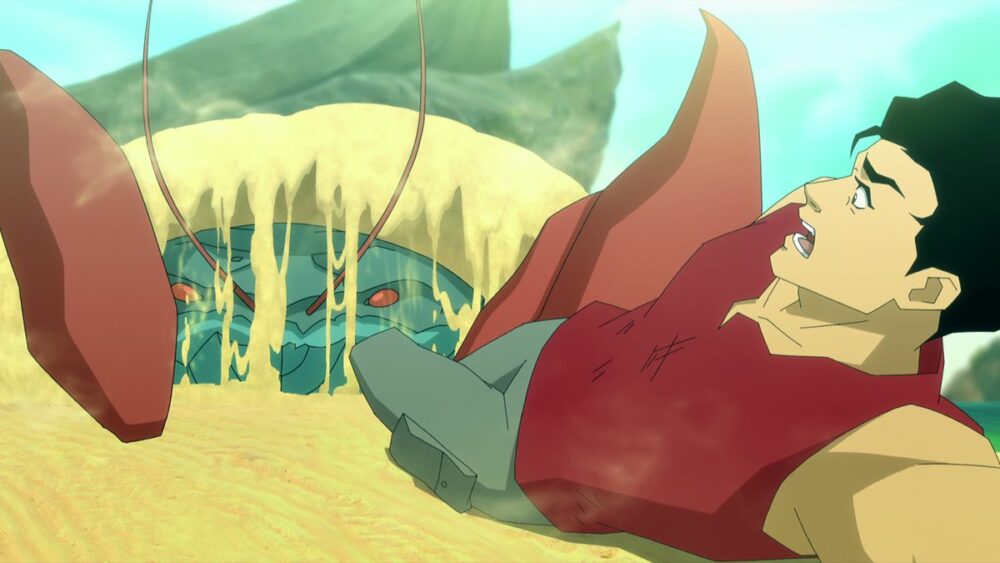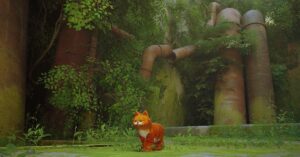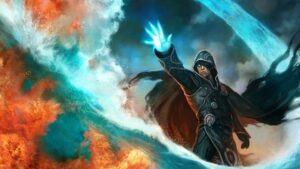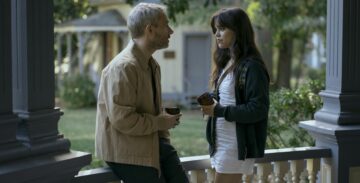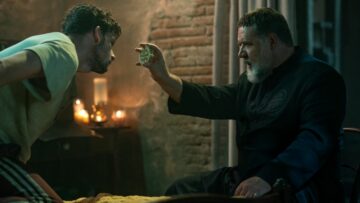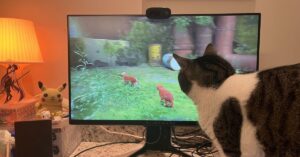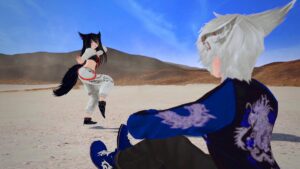The structure of a King Kong story hasn’t changed much in the last 90 years: People find a big gorilla on an island, the gorilla falls in love with a girl and is taken to the big city, the gorilla escapes, and then the gorilla plunges to his death from somewhere really tall. The 1933 original and 1976 and 2005 remakes all follow this blueprint, but pieces are scattered around other flicks, too, from the connections with people (Son of Kong, King Kong Escapes, Kong: Skull Island) to Kong being removed from his home (King Kong vs. Godzilla, Godzilla vs. Kong,) to the violent demise (King Kong Lives revives Kong with a damn heart transplant just to kill him off again by the end of the flick.)
With such a pre-destined trajectory for our most beloved giant movie apes, directors and crew of the movies are only really free to go bananas in the portions devoted to Skull Island, Kong’s homeland. There they can concoct all sorts of locations, creatures and situations to fill the ape’s world, from the prehistoric to the fantastical. And with the new Netflix cartoon, Skull Island, being almost solely set there, it gives the show a chance to absolutely bathe in that sense of delightful (and often bloody) freedom.
Being a part of the “MonsterVerse,” the shared universe featuring Godzilla and Kong as lead figures in an MCU-esque arrangement, means that Skull Island, created by Brian Duffield (Love and Monsters) is tied to the rules of the live-action expanded universe — so don’t expect to see the Lost World of dinosaurs from the 1933 film or Peter Jackson’s remake. Instead, the show’s monsters, as Kong: Skull Island director Jordan Vogt-Roberts once put it, feel “realistic and could exist in an ecosystem that feels sort of wild and out there,” and “simultaneously felt beautiful and horrifying at the same time.”
This focus on fitting monsters into their setting is clear from the beginning of Skull Island. As such, many of them feel like extensions of their habitat, predators that have gone beyond mere camouflage and turned Skull Island into a living, man-eating world. Throughout, the characters face off against creatures like gargantuan crabs that only attack when they sense movement, an immense mollusk with shiny innards that draws in its stupefied prey, deadly snakes that resemble the tree vines around them, and even a large rodent with a back that blends into a field of high grass. Like the spider from the film that hid among the trees before impaling future meals with its stalk-like legs, the cartoon constantly tries to build mutated creatures that are a part of their environment. It’s great to see a show so consistently enamored with the idea that no matter where you try to hide, there is something around that sees you as lunch.
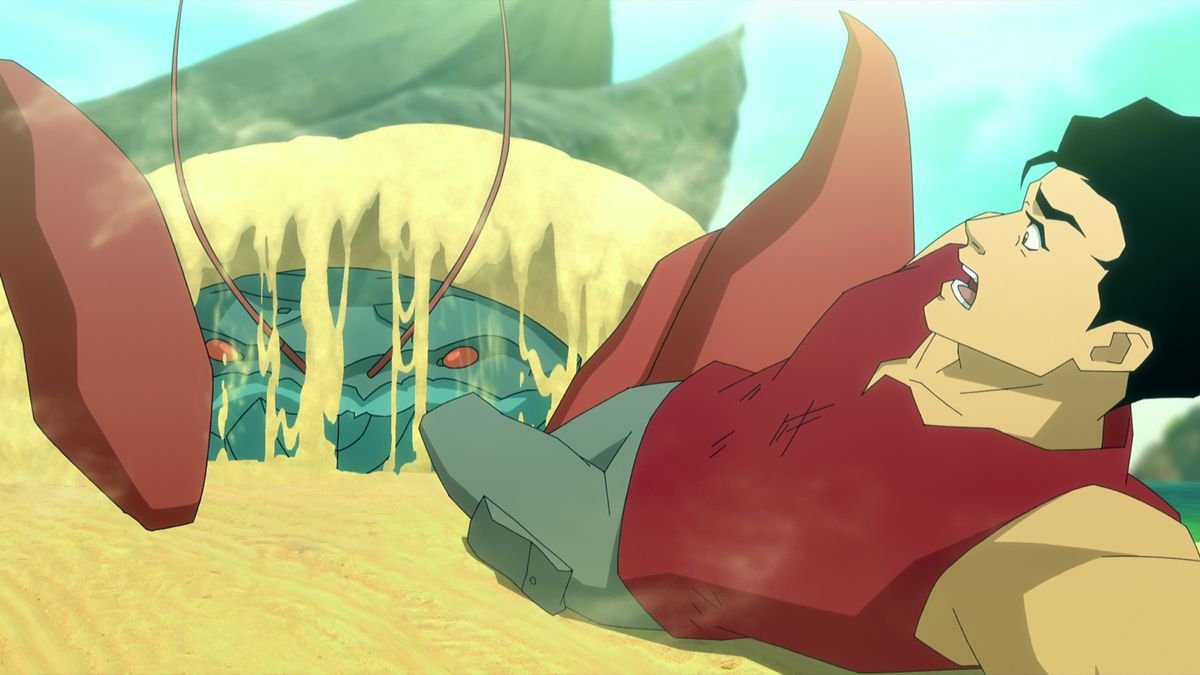
That commitment to fun also keeps the setting feeling vibrant, even when most of the characters spend all their time just walking or running through it. You’re constantly wondering “What lurks here? What monster is hiding out and waiting to devour you?” That feeling that defines some of the best moments of Kong’s history, from the first time the unlucky sailors traveled in a raft across the swamp in 1933, only to be dumped over by an inexplicably carnivorous brontosaurus lurking underneath. It’s that desire for thrill ride panic that gave us one of the eeriest scenes in blockbuster history: the “insect pit” sequence in the 2005 reboot in which every possible crevice was infested with flesh-eating bugs. This place shouldn’t exist (a grand majority of the people who find it think it’s just a weird jungle,) and Skull Island taps wonderfully into that moment of shock – When you discover that not only shouldn’t these lifeforms be here, but from the looks of it, you shouldn’t be here either. And it’s too late.
The story of King Kong is, inherently, one about mankind’s inability to leave nature alone. Inevitably, we will destroy the wonder in the world and even in franchise tentpoles like Godzilla vs. Kong, only an innocent child is able to befriend Kong, mostly because she doesn’t want to kill him, or worse, put him on Broadway. There’s plenty of those kinds of burgeoning relationships in Skull Island, but it manages to be balanced by a fascination with the terrifying potential of the setting.
After all, it’s on Skull Island that the tables are turned. Whether it’s a gaggle of dinosaurs, a place where giant creatures have alternately evolved over the years, or, as the MonsterVerse seems to relay, a tropical hideaway connected to some kind of “Hollow Earth,” Skull Island is a place to let loose. Man’s greed and misguided ambition has no power in an area where the “beauty and horror” of nature is only limited by the creativity of the filmmakers, meaning that there is literally no end to what wants to eat you.
Skull Island is now streaming on Netflix.
- SEO Powered Content & PR Distribution. Get Amplified Today.
- PlatoData.Network Vertical Generative Ai. Empower Yourself. Access Here.
- PlatoAiStream. Web3 Intelligence. Knowledge Amplified. Access Here.
- PlatoESG. Automotive / EVs, Carbon, CleanTech, Energy, Environment, Solar, Waste Management. Access Here.
- BlockOffsets. Modernizing Environmental Offset Ownership. Access Here.
- Source: https://www.polygon.com/23771432/netflix-skull-island-king-kong-show-review-monsterverse
- 1933
- 2005
- a
- able
- About
- absolutely
- across
- again
- Against
- All
- alone
- also
- ambition
- among
- an
- and
- Archive
- ARE
- AREA
- around
- as
- At
- away
- back
- BE
- beautiful
- because
- before
- beginning
- being
- beloved
- BEST
- beyond
- BIG
- blends
- blockbuster
- brian
- broadway
- bugs
- build
- but
- by
- CAN
- cartoon
- chance
- changed
- characters
- child
- City
- clear
- commitment
- connected
- Connections
- consistently
- constantly
- could
- created
- creativity
- Crew
- death
- defines
- desire
- destroy
- Director
- directors
- discover
- draws
- earth
- eat
- either
- emerging
- end
- Environment
- even
- Every
- evolved
- exist
- expanded
- expect
- extensions
- Face
- fantastical
- featuring
- feel
- field
- figures
- Film
- find
- First
- first time
- FLICK
- Focus
- follow
- For
- Franchise
- Free
- Freedom
- from
- fun
- future
- Gaming
- Get
- giant
- gives
- go
- gone
- grass
- great
- greed
- has
- Have
- heart
- here
- Hide
- High
- him
- his
- history
- horrifying
- HTTPS
- idea
- immense
- in
- inevitably
- inherently
- innocent
- instead
- into
- Is
- Island
- IT
- ITS
- jpg
- just
- kind
- King
- King Kong
- KONG
- large
- last
- late
- lead
- leave
- like
- Limited
- living
- locations
- looks
- lost
- love
- Majority
- many
- matter
- meals
- meaning
- means
- mere
- mike
- moment
- moments
- monsters
- most
- mostly
- movement
- movie
- Movies
- much
- nature
- Netflix
- no
- not
- now
- of
- off
- often
- on
- once
- One
- only
- or
- original
- Other
- our
- out
- over
- Panic
- part
- People
- peter
- pieces
- place
- plato
- plato data intelligence
- platodata
- platogaming
- Plenty
- plunges
- Polygon
- possible
- potential
- power
- predators
- Prey
- put
- Raft
- really
- Relationships
- Remake
- remakes
- Ride
- rules
- running
- same
- scenes
- see
- seems
- sees
- sense
- set
- setting
- shared
- she
- show
- situations
- So
- solely
- some
- something
- spend
- Story
- streaming
- structure
- struggling
- such
- taken
- that
- The
- the world
- their
- Them
- then
- there
- These
- they
- think
- this
- those
- Through
- Throughout
- tied
- time
- to
- To Leave
- too
- tree
- try
- turned
- universe
- us
- vibrant
- vs
- waiting
- walking
- want
- wants
- was
- we
- What
- when
- where
- whether
- WHO
- wild
- will
- with
- wondering
- world
- worse
- years
- you
- youtube
- zephyrnet
